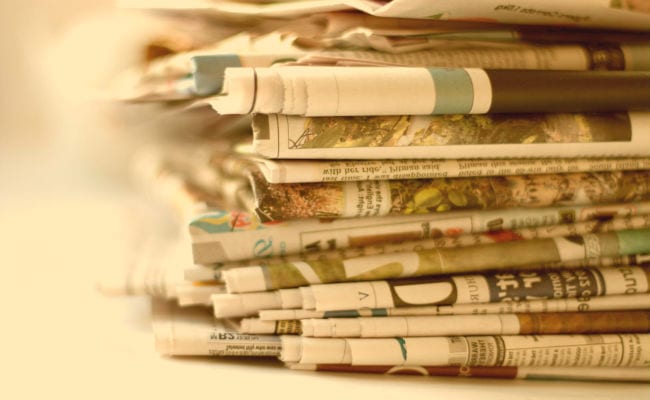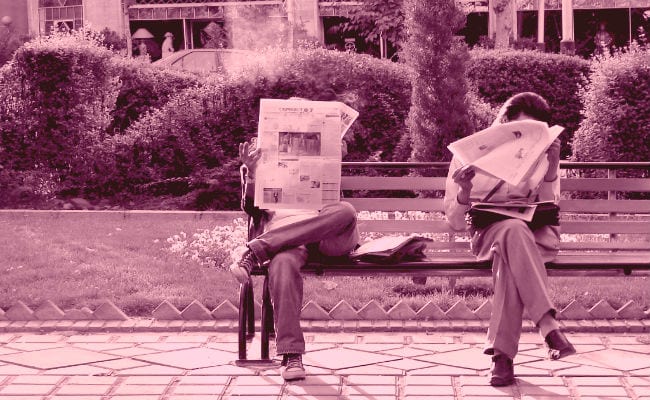Do all newspapers have the same structure?
The way we present the information: sequence, font, accessories, color, images, etc., is decisive in the effectiveness of the transmission of the message, and although we can establish the parts of the newspaper in a general way, the truth is that there may be variations from one publication to another that determine their individuality. You may have never thought about this before, however, it is interesting to take some time to analyze it, since, in any context, the way in which the information is presented is decisive in the success of the emission of a message.
Written communication is an art that very few people master, since in this aspect we do not have auxiliary factors such as signs and intonations, which in the case of spoken communication represent a support that complements and gives strength to the message.
The concept in the structuring of newspapers has undergone a radical transformation, today we find more color and images on its pages. And this is because it is currently recognized that visual communication offers an important reinforcement, and in many cases it is capable of capturing people's attention, giving success to the publication.
Gutenberg's invention of the printing press was the starting point for the mass dissemination of written information; While the Romans had previously worked with a fledgling publication charged with spreading government news, large-scale production began with the development of this invention. Although the first newspapers were simple in structure, nothing to do with those publications made with cartoons and images, their objective of transmitting information was well achieved, and during the development of both world wars, clandestine information was shared through anarchist publications, which allowed the emergence of many resistance groups.
The main parts of the newspaper

1. Cover
It occupies the front page, so of all the parts of the newspaper, the role of this is fundamental since it is usually the point that catches the reader's attention. That is why the most important news of the day are selected to be published on the “front page”.
The first page is a selection of the best news from all the sections, and it should be designed in such a way that at a single glance the reader can get an idea of what is the most important thing that has happened in the day and what is going on. to be found inside the newspaper.
Headers
Parts of the newspaper, located on the front page, and this is what allows us to identify the newspaper. It is made up of the following elements:
- The name of the newspaper.
- The logo: drawing that identifies it.
- The motto: Phrase that defines the ideological line of the newspaper.
- Data: space in the header where information from the newspaper itself is located (address, telephone).
- Issue date.
- Years of publication of the newspaper.
- Issue number.
- Price.
Photo of the day
It is the one that complements the main news item accompanied by its caption, which is the text that accompanies the photograph and which aims to help interpret the meaning of the image. It is another part of the newspaper that occupies a space on the cover, in order to capture the reader's attention.
Window
It is usually placed at the top of the page, to the sides of the banner or above it. Some newspapers also place it between the head and the information. It consists of a short story, which in many cases is presented with an image.
Summary
It consists of a synthesis of the articles that will be found in the sections of the newspaper. It is a kind of index.
ratplanes
They are called on the cover to information that is developed inside. Some newspapers place one or two rataplanes at the head, on both sides of the sign. It is a short text written in a way that makes an impact.
Advertising
It consists of the sponsors' advertisements, and is almost always placed at the bottom.
2. Sections

It consists of the division based on the classification of the type of information presented in the articles. Considering the variety of news that can be handled, its classification is very important to avoid the feeling of confusion in the reader, and in many cases to help them locate the group of publications of their interest (not all people read all the content) .
A newspaper contains on average around 100 pieces of information including chronicles, news and reports; If criteria are not used to present the information, its reading would be somewhat chaotic and its design would be impossible.
In short, we can say that the sections are equivalent to the chapters of a book, and are simply a way of organizing the information so that it does not lose its meaning.
Classification criteria
- Type of reader: It consists of the analysis of the different types of motivation that can induce the person to review the newspaper, presenting the information in a way that has a greater reach in the different types of public.
- Theme: Seeks to maintain homogeneity in the information presented.
- Scope of dissemination: Consider the context surrounding the publication (geographical, political and historical factors)
Presentation of the information
There are studies aimed at determining the usual way in which readers read a newspaper. Although traditionally it was considered that the first place where the person placed their attention was in the upper right space; For this reason, at present, on the other hand, two theories are handled:
- Circular reading: Which maintains that the reading of the first page is circular, starting in the upper left corner and going clockwise. Therefore, the main story is placed in the upper left corner, in what is called the primary optic region or area.
- Reading in "Z": Consider that the top has more value than the bottom and that the left has more value than the right. Make a division into quadrants, the most important being the upper left and the least, the lower right. Consequently, according to this theory the sight makes a reading following the tracing of the letter zeta (Z).
Importance
The presentation of the news in an organized form encourages the reader to read it in isolation, however, at the same time it facilitates its location within the newspaper. When a newspaper has already been established, it has a similar way of handling its organizational criteria, although it may happen that the order of presentation or denominations varies, but once the newspaper has established a structure, it maintains it in order to accustom the reader to the rapid location of the news. The name of each section appears at the top of the pages that comprise it, and we can find that the first page of each section usually has a larger header.
3. Body of the newspaper
The news block that makes up the publication is one of the most important parts of the newspaper, as they consist of the “heart” of the publication. It can be said that it is made up of its sections.
Sections that make up the body of a newspaper:
-
- Opinion, critical articles on controversial topics such as politics and economics.
- Publishing, consists of the editor's letter that touches on a topic that the publication encompasses.
- Letters from readers, consists of letters written by users can be of thanks or request.
- Interviews, articles based on testimonials.
- International, includes an international news section.
- Politics, news that affect the political sphere of the country.
- Society, news about social events.
- Economy, describe the factors that affect the economic and monetary sector.
- Sports, results of championships, tournaments or competitions in the sports field.
- Shows, news about cinema, art and television.
- Supplements: weather, horoscope, hobbies, lottery results, etc.
4. Back cover
Located on the last page, its objective is to complement the information that has been presented on the first page, by including elements that have to do with information, opinion and advertising.
Parts of the newspaper that usually include a report, an interview or a column and of a lighter nature, which can sometimes be humorous and ironic in tone, and this is what studies classify as a reading driver, and that is why they point out that this last page has high reading rates. Regarding the content presented, in most cases the last page collects social information, romantic topics or advertising; since, together with the cover, it is one of the parts of the newspaper that most captures the reader's attention.
Many newspapers tend to place a masthead highlighting the newspaper banner.